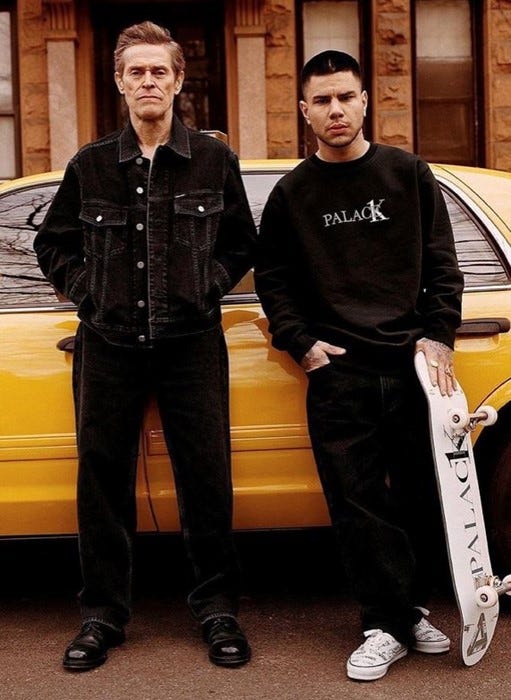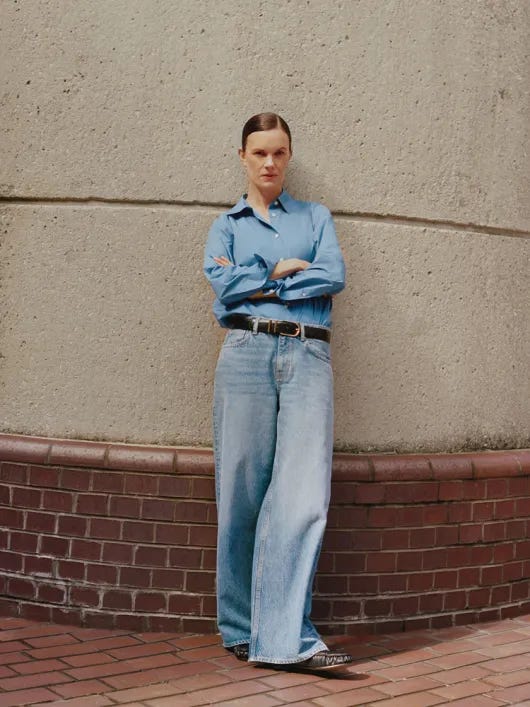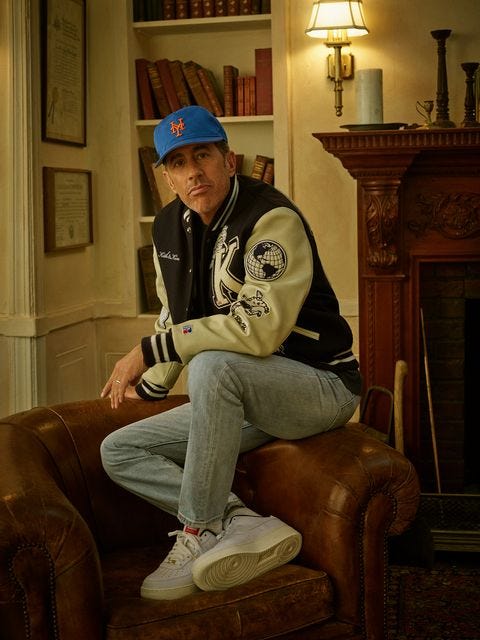idle gaze 031: selling future aspiration.
The most powerful effect of "silver influencers" is the comfort of knowing that relevance doesn't always decay with age.
There’s been a steady uptick in fashion brands courting younger consumers with celebrities and personalities twice or three times their age. Some of the most culturally impactful brand partnerships of recent times have gone against the youth = relevance playbook. A selection of my favourites include:
a) Willem Dafoe depicting true NYC eccentricity in his role as a pizza boy and cabbie in the campaign for streetwear’s most unexpected collab of the year: the CK1 Palace collection.
b) Jo Ellison, the editor of Financial Times’ How to Spend it Magazine - one of the last bastions of decadent, aspirational living - representing the modern business wardrobe for Arket.
c) Jerry Seinfeld’s modelling debut with Kith, a brand at the forefront of the quintessential all-American outfit, including six-panel caps, varsity jackets, faded blue jeans and grey sweatpants.
These kind of affiliations stand out in the sea of famous-faced brand partnerships for a few reasons:
Cultural juxtaposition: There’s a particular spark of joy that happens when we experience different areas of culture collide unexpectedly. A cult actor associated with quirky villains and art house films partnering with a skate brand. A 90’s stand-up comedy icon representing a hyped sneaker brand.
A look of unmatched confidence: Look into those steely, fixed eyes of Willem, Jo and Jerry above. Feel how they exude a sense of authority, ingrained wisdom and confidence. They have worked hard, and become the masters of their trades. Supremacy achieved not through follower numbers, but from cold, hard, lived experience. It provides substance and credibility in a way young “it” people seldomly can.
Taps into the current zeitgeist: “Silver influencers” and trends that aspire to more ‘mature’ lifestyles (take for example the New England, linen-clad “coastal grandmother”) are currently very much in vogue, a convenient trend for heritage brands seeking to radiate “we’re a classic, but remixed in a fresh and modern way” to a younger audience.
But there is also something more philosophical, existential, at play too. These brands are toying with the idea of future aspiration. They offer a sense of comfort that things might not change with age.
A recent New Yorker piece explored the psychology behind how we view the tajectory of our lives. Current research tells us that when it comes to looking back at our past and into our future, people can be categorized into two camps: dividers, and continuers.
For dividers, their past and future selves feel like strangers - fictional characters from a novel. But for continuers, your child, teenage, young adult and 70-year-old selves are all a version of the same you.
Right now the most valuable currency in the aspiration economy is newness, novelty and youth. Marketing and advertising, especially across fashion, is all about selling a lifestyle and image for your current self. Future chronological chapters of your life are deemed irrelevant. But these partnerships challenge that assumption. They sell the idea that your future self is not an irrelevant stranger, but the same you. With the same spark, energy and ambition. You too can be like Diane Keaton, Joan Didion and Jennifer Lopez (whom have all also been faces of fashion brands recently) when you grow old.
These unions of fame and influence imply that fashion sense, being in the know, or social status, is not limited to younger age brackets. They quash a fear that relevance, excitement or style, diminishes as the years go by. It’s a statement that announces: the best may still be ahead.






